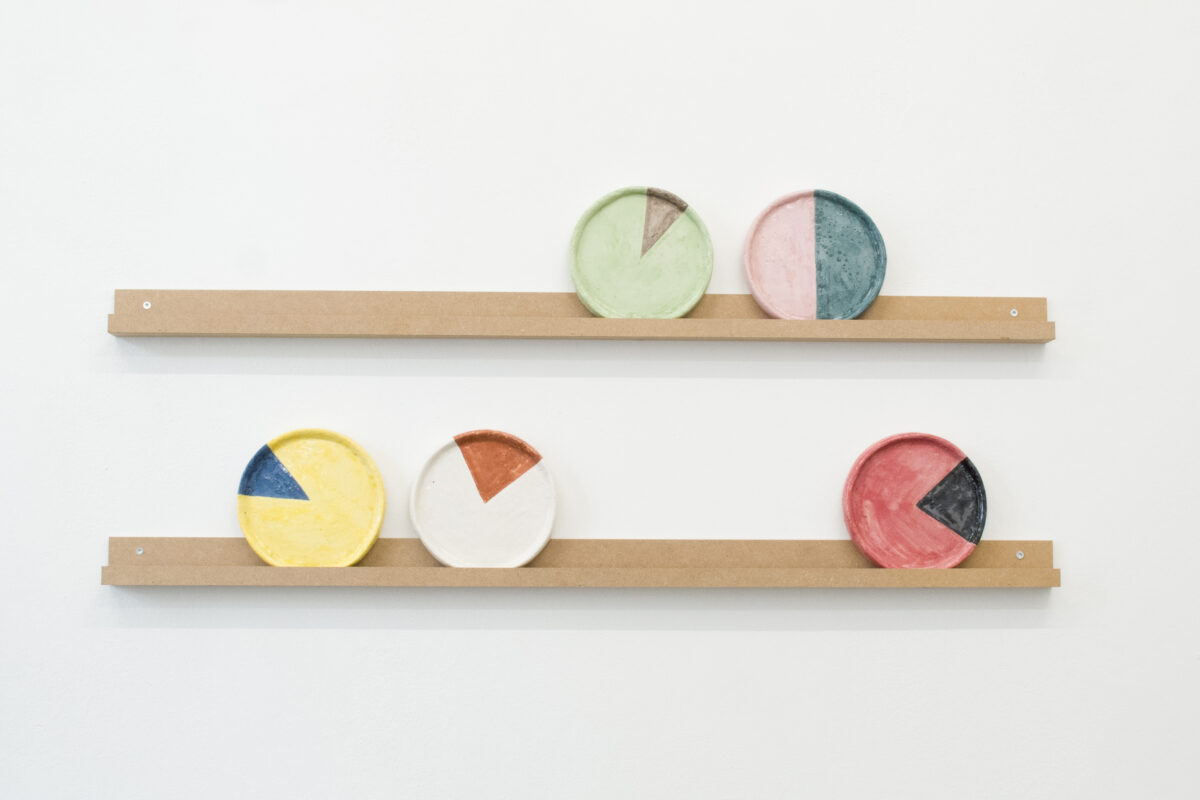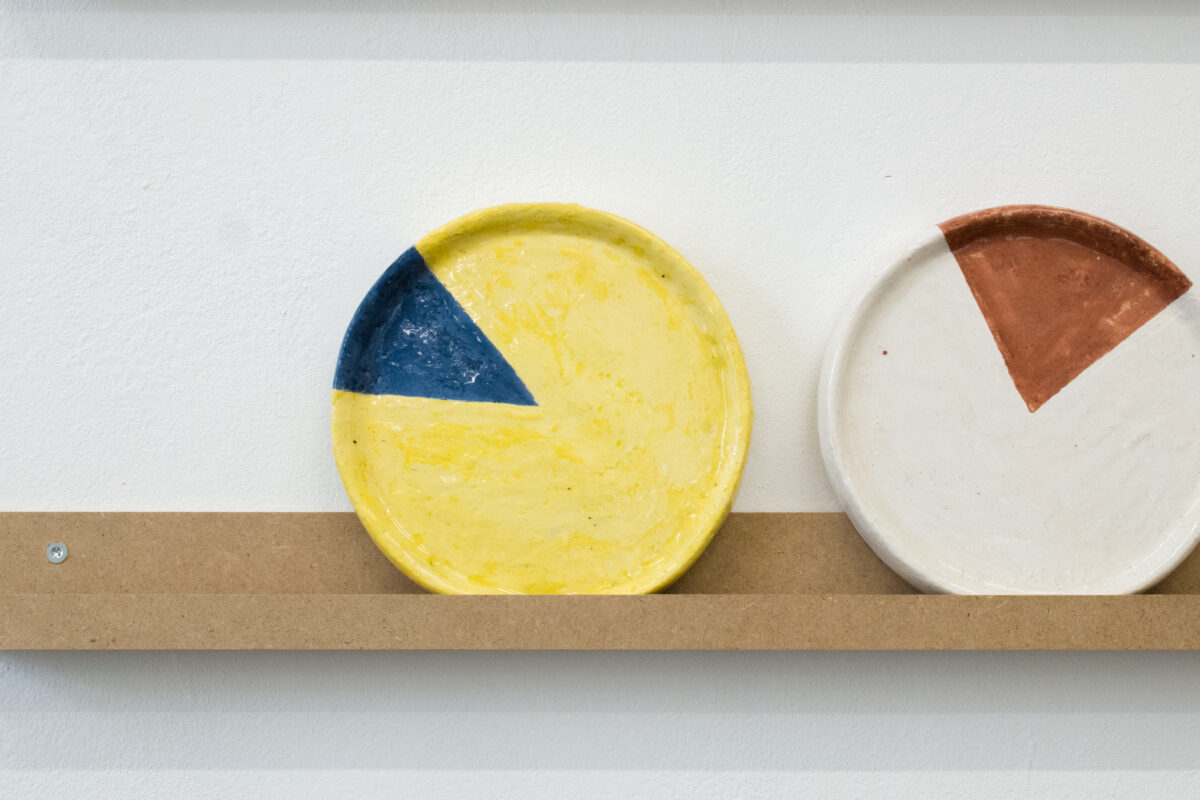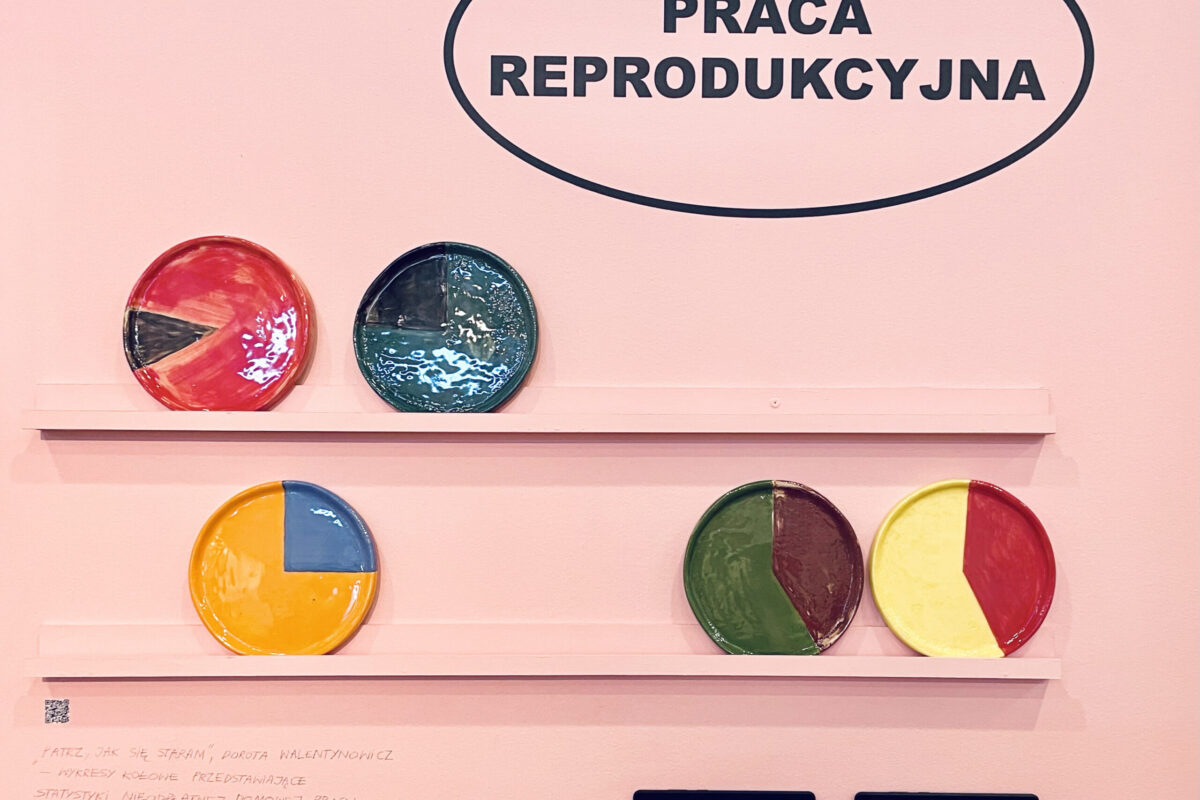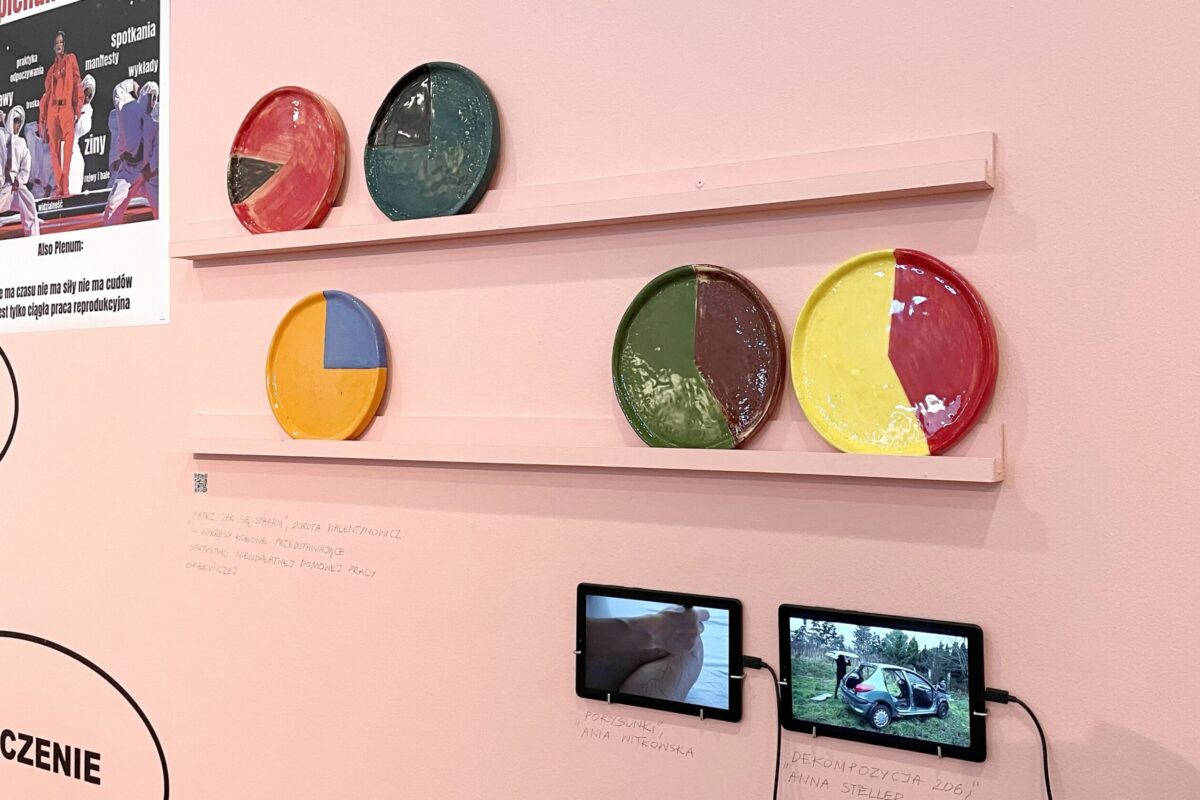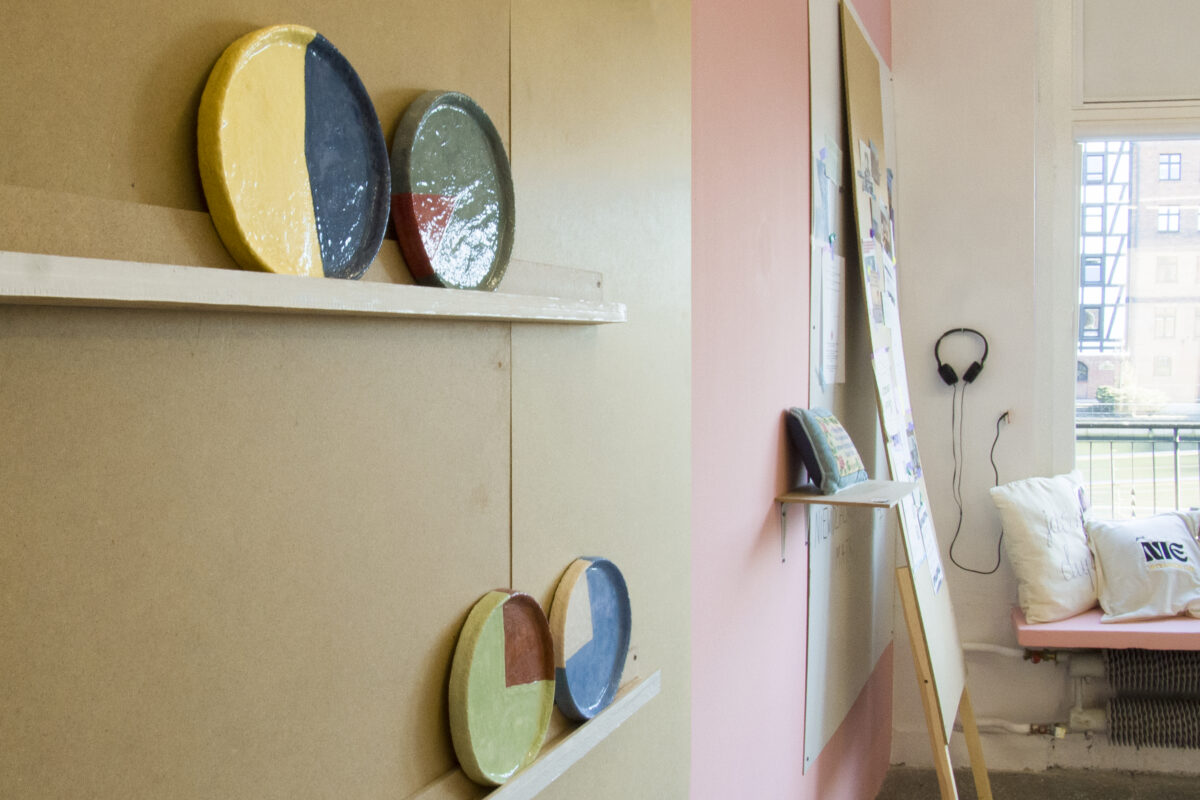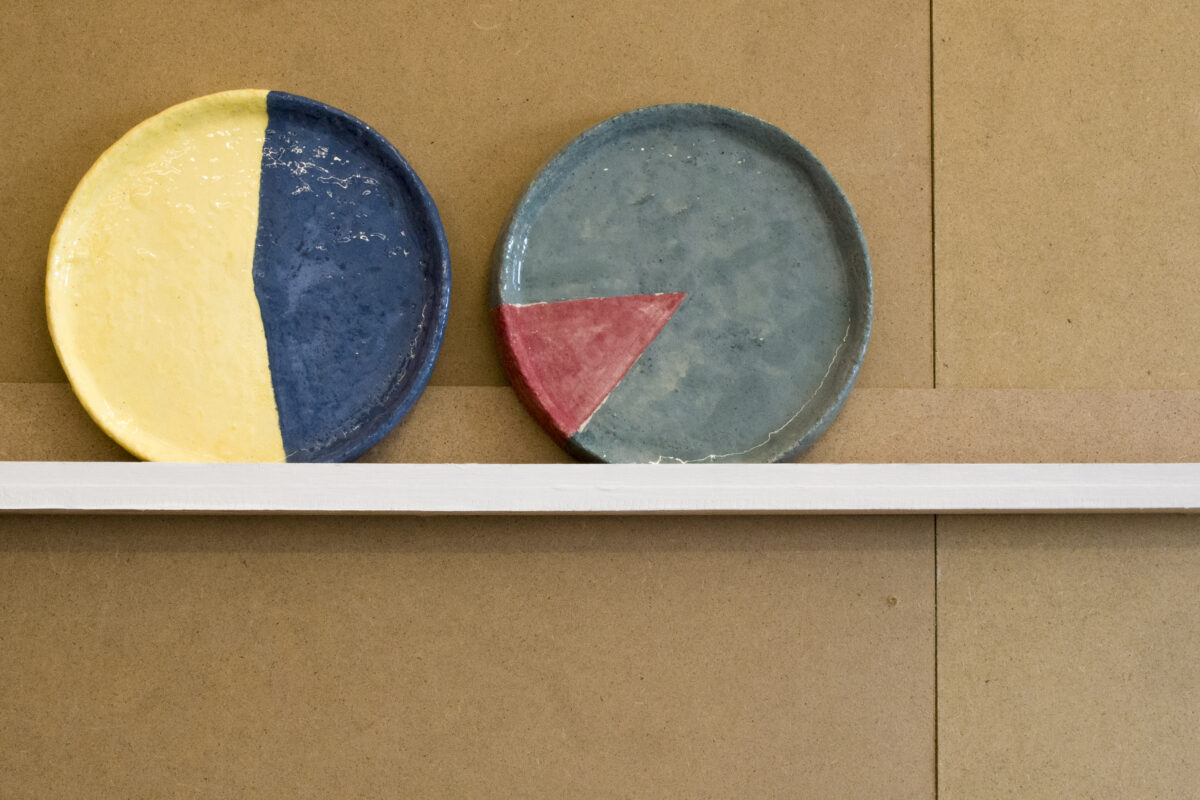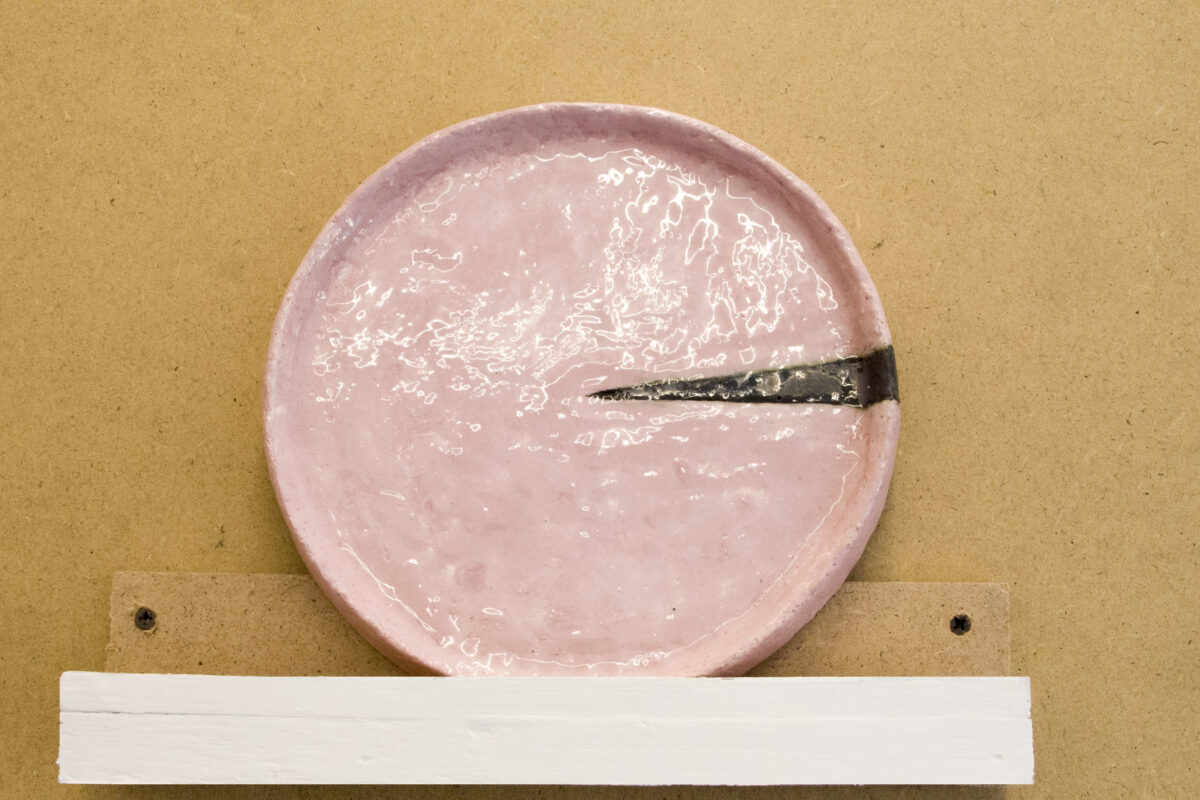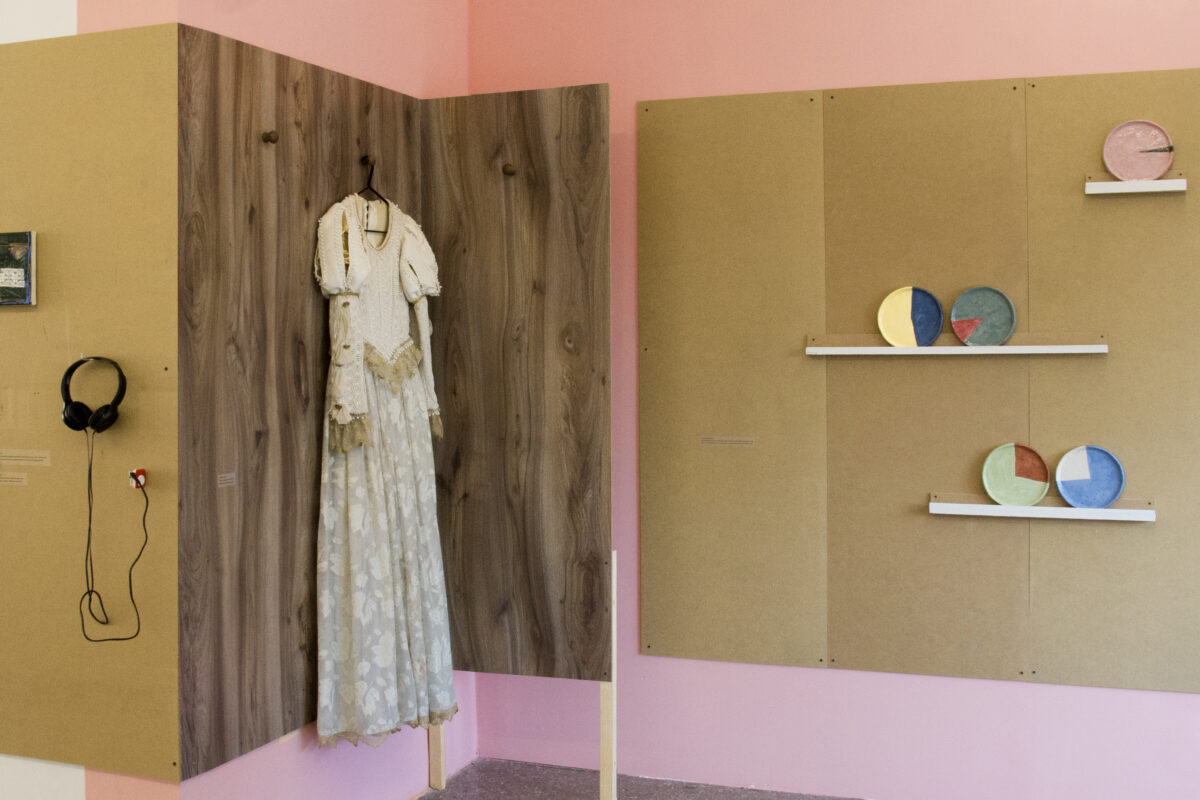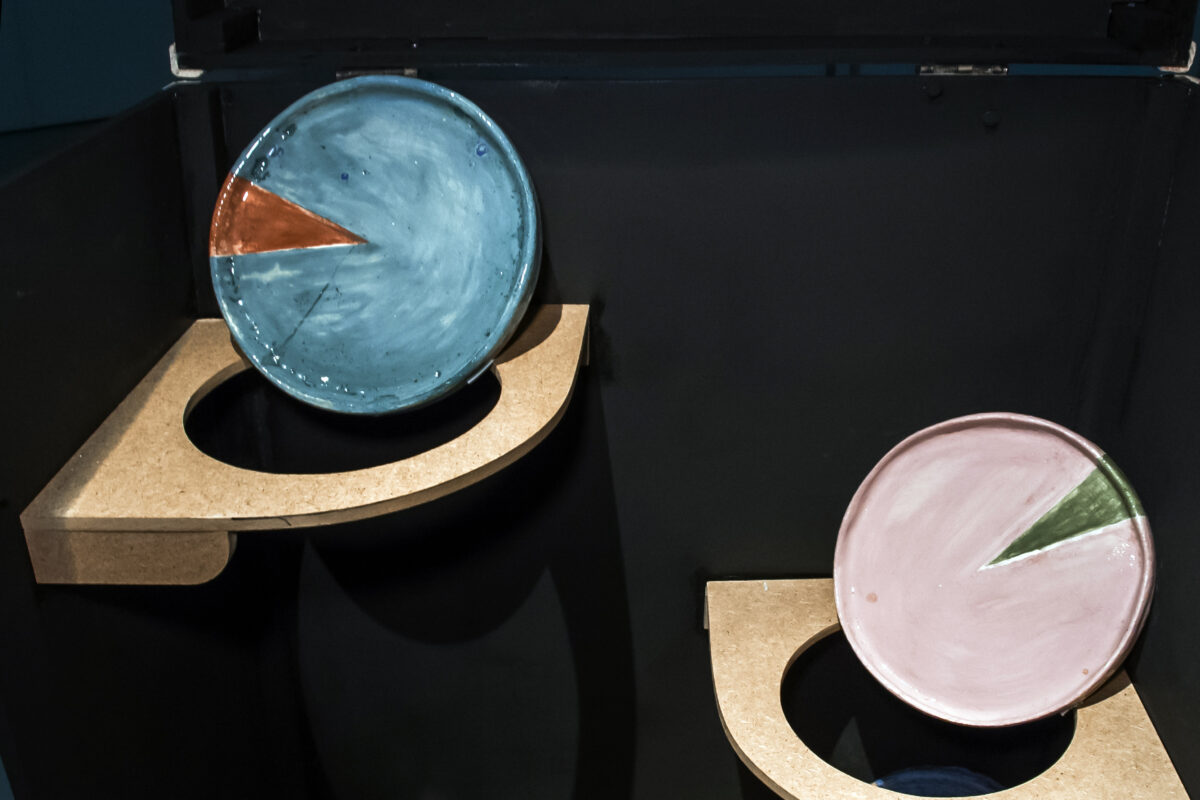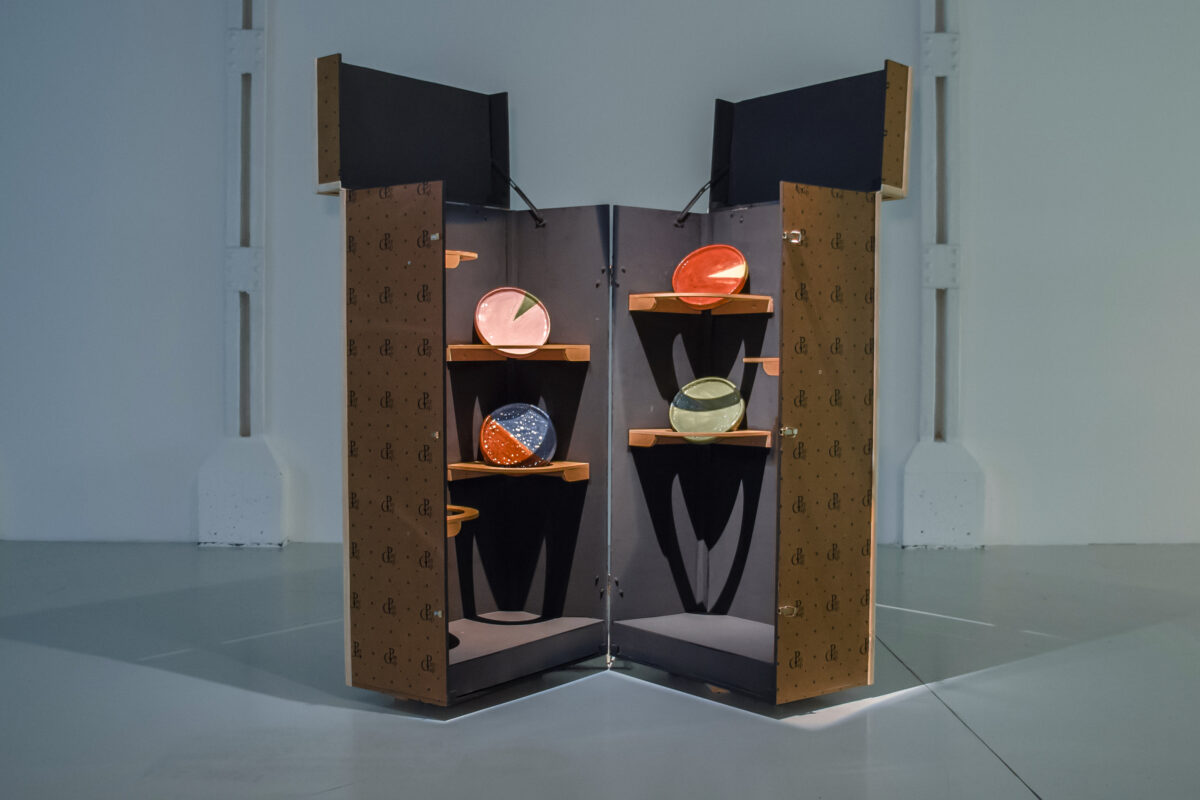installation (ceramic object, mdf display) 2022/23/24
’Care’, understood on the one hand as unpaid work performed by women, and on the other as a system of soft control that creates the appearance of a relationship based on mutual dependence and gratitude, is one of the key concepts behind the series of handmade ceramic plates titled 'Watch Me Work’. The series addresses the time poverty fuelled by capitalism and the employment system, which ultimately limits the career and personal choices of many women. Using the aesthetic of statistical charts, it illustrates the relationship between work and gender in various fields.
„Watch me work” vol 4 illustrates the global statistics of unpaid domestic carework UDCW (source: Oxfam). 1. procentage of UDCW performed by women : 75%, 2. UDCW tribute to global economy 25%, 3. inablity to find paid work because of need to perform UDCW : 42% of women 4. percentage of the day spent by women for UDCW in low income counties : 60%, 5. access to social security for UDCW workers : 10%
“Watch me work” vol 3 illustrates the global statistics on maternity leave (source: „Care at work” report, International Labour Organization 2022) 1. the right to maternity leave coverage for self-employed mothers : 13 % 2. the right to maternity leave coverage for adoptive mothers : 22 % 3. the right to employment protection over the full maternity period : 50 % 4. access to childcare for children aged 0–2 years : 20% 5. compared lenght of paternity and maternity leave : 10%
“Watch me work” vol 2 illustrates the statistics on unpaid care work, parental leave and housework : 1. division of the labour market
women 45.4% / men 54.6% (source: Central Statistical Office, 2021), 2. division of unpaid care work : women 76.2% / men 23.8% (source: International Labor Organization, 2018), 3. division of housework : women 71% / men 29% (source: Public Opinion Research Center, 2018)
4. division of economically inactive people due to family responsibilities : women 87% / men 13% (source: Central Statistical Office, 2019), 5. distribution of parental leave : women 99% / men 1% (source: Social Insurance Institution, 2022)
“Watch me work” vol 1 illustrates the statistics on gender inequality in football : 1. cash prizes for the winners of 2018/2019 World Cup women $4,000,000 / men $38,000,000 (source: Forbes), 2. total prize money in the World Cup 2018/2019 women $ 30,000,000 / men $ 440,000,000 (source: Forbes), 3. highest annual soccer wages in the world 2021 women $3,300,000 / men $125,000,000 (source: goal.com), 4. award for the Polish Champion in football IN 2019: women PLN 60,000 / men PLN 5,000,000 (source: polskapilkakobiet.pl), 5. the highest monthly earnings in the Polish Ekstraklasa: women PLN 5,000 / men PLN 60,000 (source: polskapilkakobiet.pl, data from 2019), 6. average annual Premier League earnings women £325,000 / men £2,700,000 (source: Bloomberg), 7. From 2022, the US Soccer Federation will pay men and women equally for athletic performance (after a 5-year lawsuit) (source: cnbc.com)
exhibition views : Gdanska Galeria Miejska 2023, Trafostacja Szczecin 2022, New Joerg Vienna 2023
.
.
.
.
.
.
.
.
.
.
.
.
.
.
.
.
.
.
.
.
.
.
.
.
.
.
.
.
.
.
.
.
.
.
.
.
.
